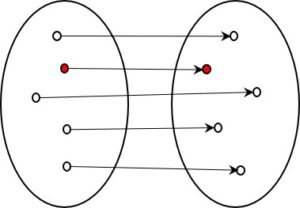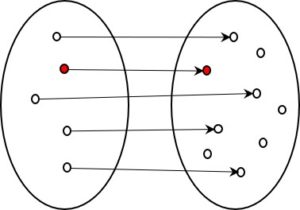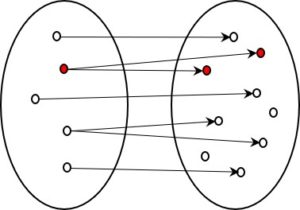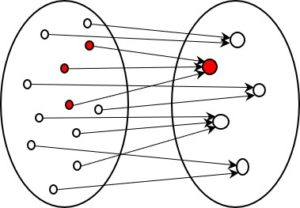What is the mental world?
The mental world is the world in our heads. It is the way in which we perceive the world; it consists of our sensations, feelings and thoughts. It is a completely subjective world.
In the theory of the three worlds, the mental world is the third world besides the physical and the Platonic worlds.
Difference from the physical world
Whereas the physical world is objectively comprehensible, the mental world remains subjective.
In other words: whereas we can observe the objects of the physical world from the outside, this is impossible with the objects of the mental world.
The example of colour
Objectively (physically), colours can be measured as wavelengths of light waves. Thus yellow and blue, for instance, have specific wavelengths, which can be objectively measured in nanometres. What we perceive, however, is not the wavelength. We have a subjective impression of yellow or blue, which is actually triggered off by the physical phenomenon of the light wave, yet what we sense is not the wavelength, but a very subjective impression of a yellow or blue colour. Thus we perceive green, for example, as a very specific colour which corresponds to a certain wavelength. As we know from our art lessons, however, green can be mixed from blue and yellow. This means that what hits our eyes physically is a combination of photons with a “blue” and “yellow” wavelength. However, we do not perceive these two objectively existing wavelengths, but we apprehend the combination as green, i.e. as a completely different wavelength. This subjective impression is called qualia in the literature.
Does the mental world really exist?
Or is it simply an emanation of the physical world? Many people believe that it is. The subjective impression that we sense is generated in the brain by electrical currents triggered by photons on our retina. In these terms, the mental world does not really exist but is an emanation of the physical world, a mere effect of physics which makes us believe that we see a colour.
At the other end of the spectrum, we find the solipsists and the radical constructivists such as Ernst von Glasersfeld. For solipsists, the mental world – i.e. their own imagination – is the only world that exists with certainty. Everything else can be deception, a dream; only one’s own imagination is certain.
Thus we have two extremes
- a) Physicalists: only the physical world exists; the mental world is wholly constructed out of the physical world.
- b) Solipsists: only the mental world exists; it fakes the existence of an external physical world.
What is more interesting than these two extremes are the opinions in between. Roger Penrose, for instance, advocated with his theory of the three worlds that none of the three worlds should be excluded as non-existing. Rather, he wanted to clarify the interrelations of the three worlds.
Coexistence
This is also my stance: although it seems plausible to see mental sensations and processes as mere effects of the physical world, it strikes me as sensible to view the mental world as a world of its own – not because it could not have emanated from the physical world but because it can be described better in this way. To return to the example of the colours: it is irrelevant to human behaviour whether green is generated by its own green wavelength or by a combination of yellow and blue wavelengths; I always see the same colour and also behave accordingly. The description of human thought, perception and behaviour becomes at once simpler and more precise if we tackle the processes in the mental world directly. This is possible, but only from the inside, if I imagine the thoughts, colours, etc. of the mental world myself.
Communication about mental objects (thoughts, colours, etc.) is possible, too, but also requires a subjective basis of experience; this time, one that the interlocutors have experienced in a similar way.
Where does the mental world play a part?
Wherever inner perceptions and processes are involved, we are in the mental world.
The following areas can hardly be described without accepting the existence of the mental world:
- psychology,
- culture,
- values, morality,
- politics,
- art.
Thus the mental world is not quite irrelevant.
Semantics
In my own field, semantics, a clear dividing line between the objective and the subjective worlds can be discerned. Whereas words and sentences are part of the objective world, the concepts, i.e. the meanings of the words, and the thoughts that are expressed by means of the sentences, are part of the subjective, i.e. mental world.
This is a post about the theory of the three worlds.



